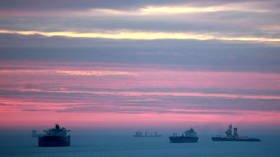Russian Arctic sea route shipping exceeds 10 million tons in Q1

Freight transportation via Russia’s Northern Sea Route (NSR) grew 4.5 percent year-on-year from January to April, exceeding 10 million tons, the Federal Agency for Maritime and River Transportation, Rosmorrechflot, said.
The agency’s representative, Nikolai Monko, earlier told TASS that the growth of freight transportation would be moderate in 2020.
According to Rosmorrechflot, 31.5 million tons were transported in 2019, up from 21.1 million tons in the previous year. Transit carriages rose by almost 41.9 percent last year to 697,200 tons. Cargo handling was mainly conducted at the ports of Sabetta (20.5 million tons), Dudinka (1.5 million tons), and the terminal near Cape Kamenny on the Yamal Peninsula (7.7 million tons).

The Northern Sea Route, which stretches the entire length of Russia’s Arctic and Far East regions, is expected to become a major trade route for goods shipped between Europe and Asia.
According to President Vladimir Putin, the route is “the key to the development of the Russian Arctic regions of the Far East” and the goal is to make it a “truly global, competitive transport artery.” Putin plans on having NSR cargo traffic significantly increased to up to 80 million tons a year. Ships will mainly transport liquefied natural gas (LNG), oil, and coal.
Also on rt.com US wants Russia to stop being stingy & share its Arctic waters with the worldThe Arctic route from Southeast Asia to Europe cuts transportation time in half compared to traditional routes through the Suez and Panama canals. In Soviet times, it was used mainly to supply goods to isolated settlements in the Arctic.
For more stories on economy & finance visit RT's business section













